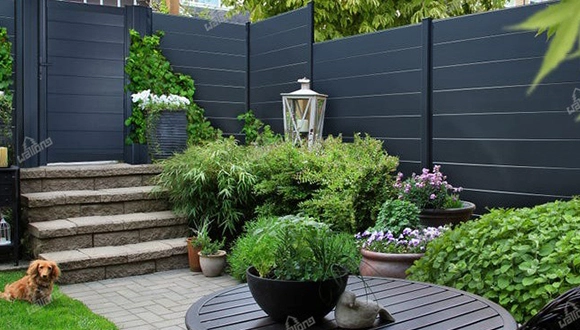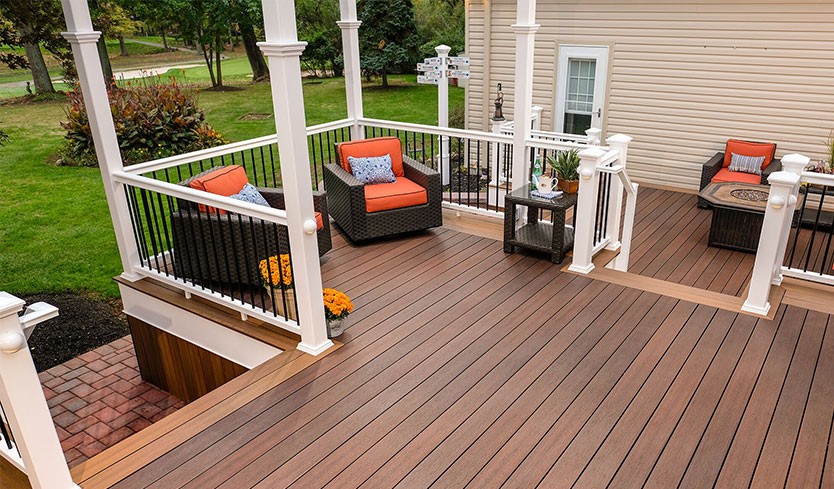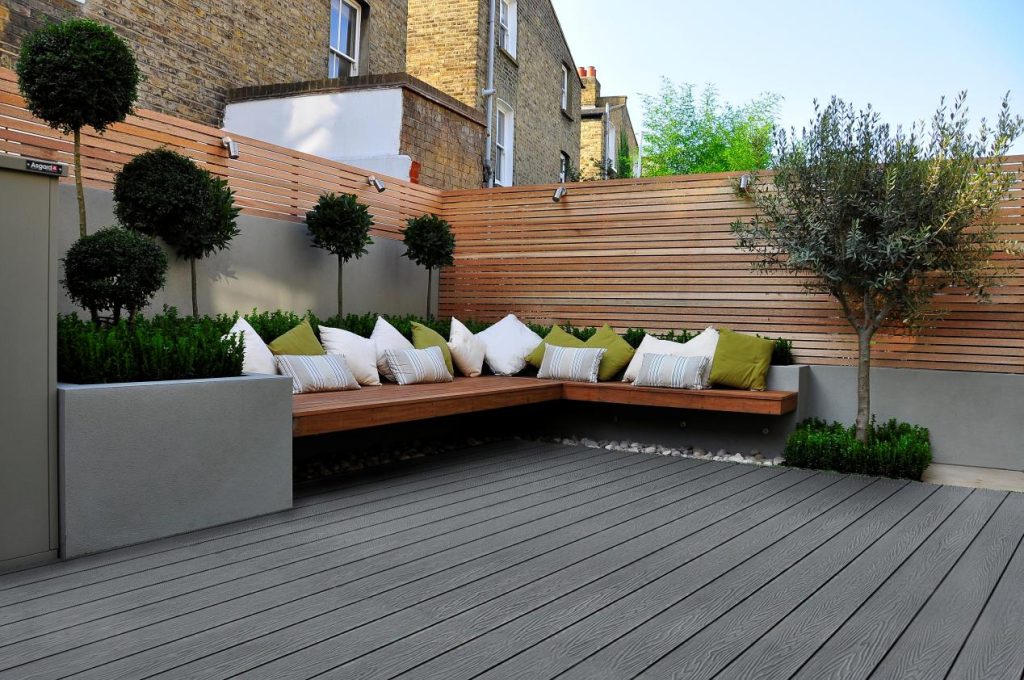Wood plastic composite fencing (WPC fencing) is a modern alternative to traditional wood or metal fences, combining natural wood fibers with recycled plastics for a durable, eco-friendly solution. It offers the natural look of timber with greater resistance to rot, termites, and weather, while requiring far less maintenance. With many wood plastic composite fence panels available, buyers often wonder how to choose the right color, length, thickness, and supplier. This guide explores all key factors to help you make the best decision.
Table of Contents
What Is Wood Plastic Composite Fencing?
Before diving into the details, let’s start with the basics.
Wood plastic composite fencing is made from a blend of wood fiber (such as sawdust or bamboo fiber) and high-quality recycled plastics, typically polyethylene or polypropylene. These raw materials are mixed, melted, and extruded into strong panels or boards that mimic the appearance of wood but perform like plastic.
Key benefits include:
Durability – Resistant to weather, decay, mold, and insects.
Low maintenance – No need for regular painting, sealing, or staining.
Eco-friendly – Made from recycled materials and sustainable sources.
Variety of styles – Available in multiple colors, textures, and finishes.
Cost-effective long-term – Though initial costs may be higher than wood, lower upkeep makes it cheaper over time.
Compared to traditional fence panels, WPC fence wood plastic panels strike the perfect balance between natural beauty and modern strength.
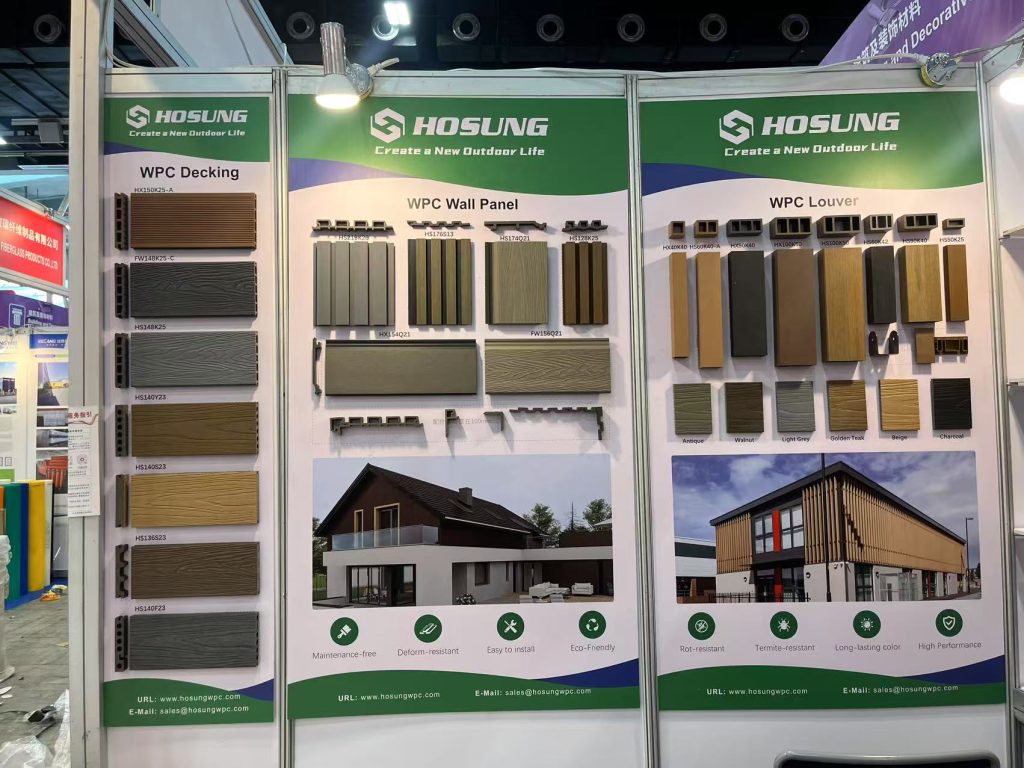
Choosing the Right Color for Wood Plastic Composite Fencing
One of the first decisions when buying fence panels plastic wood is color. Unlike natural wood, which requires regular painting, staining, or sealing, wood plastic composite fencing comes in pre-finished colors that are engineered to stay vibrant for many years with minimal maintenance. The pigments are mixed directly into the composite material during production, which means the shade is more consistent and less likely to peel or flake compared to painted wood. For homeowners, this makes color selection an investment choice because the fence will maintain its look for decades.
Popular Color Options
Classic Wood Shades
Light oak, teak, or cedar shades provide a natural, timeless look. These options are perfect for homeowners who want the warmth of traditional wood but the durability of composite. They blend seamlessly into gardens and rustic landscapes while giving a cozy and organic feel.
Modern Neutrals
Grey, charcoal, and black tones are increasingly popular in contemporary designs. These shades deliver a clean, sleek, and minimalistic appearance that pairs well with modern homes, concrete patios, and metal elements. Their bold contrasts make outdoor spaces feel more structured and stylish.
Warm Earth Tones
Brown, walnut, and redwood offer a balance between natural and modern styles. These tones work well in a variety of settings, from urban patios to countryside villas, and they complement greenery beautifully. Earthy hues also create a sense of harmony in gardens and family-friendly outdoor areas.
How to Choose the Right Color
Match with your house exterior – Select a shade that complements your siding, roof, or outdoor flooring materials for a unified design.
Consider maintenance of appearance – Darker tones may highlight dust, water spots, or scratches more, while lighter tones often disguise dirt.
Think about resale value – Neutral tones such as grey or brown generally appeal to a wider audience and can add value if you sell your property.
Long-term stability – Always check whether the panels are UV-stabilized to ensure the color resists fading under strong sunlight. Quality suppliers will provide test data to support this.
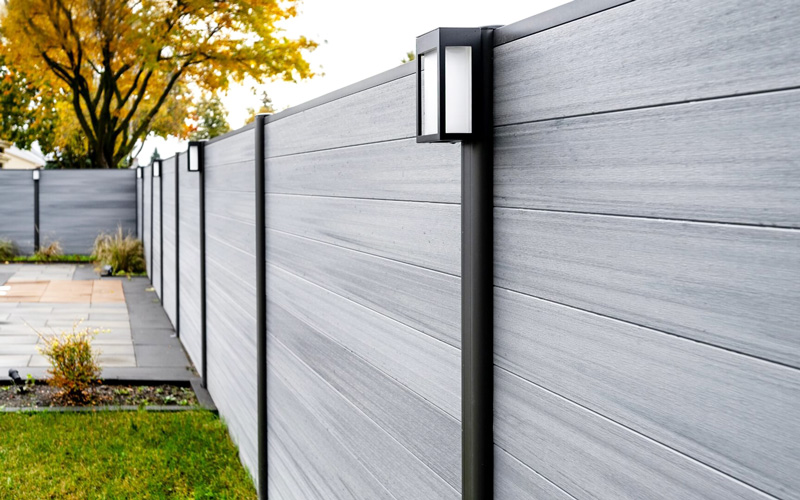
Selecting the Right Length of WPC Fence Panels
Length is another important factor when choosing wood plastic composite fence panels, as it directly affects both the installation process and the overall appearance of the fence. The right panel length not only determines how many posts you need but also influences the continuity and uniformity of your fencing project. Longer boards can create sleek, uninterrupted lines, while shorter boards are more flexible for complex layouts or uneven ground.
Standard Fence Panel Lengths
Most suppliers offer lengths ranging between 1.8m to 2.4m (about 6–8 feet), though custom sizes may also be available for special projects.
Shorter Panels (around 1.8m)
Easier to transport, handle, and install, shorter panels are excellent for DIY projects and homeowners with smaller yards. They reduce the weight of each unit, making them manageable for one or two people without professional equipment. Decorative fencing, low boundaries, or partial enclosures often benefit from shorter panels.
Longer Panels (up to 2.4m or more)
Longer panels cover more area with fewer posts, creating a streamlined and modern appearance. They are often favored in larger properties or commercial areas where minimizing visible joints is important. While heavier to move and install, they reduce the number of fasteners and overall labor required.
Factors to Consider
Local privacy laws – Some municipalities restrict the maximum fence height or length allowed for residential properties. Always check regulations before purchase.
Wind resistance – Longer panels may act like a “sail” in strong winds, so reinforcing posts with concrete or choosing ventilated designs is advisable.
Project budget – Longer boards might be more expensive individually but could reduce installation time and costs by requiring fewer posts and fasteners.

Deciding on the Right Thickness
Thickness is often overlooked but plays a crucial role in the durability and stability of WPC fencing.
Common Thickness Options
15–20 mm Panels
Lightweight, cost-effective, and suitable for decorative fences.
Ideal for residential gardens where security is less of a concern.
20–30 mm Panels
Stronger, more impact-resistant.
Suitable for medium-security fences, backyards, and commercial spaces.
Above 30 mm Panels
Heavy-duty strength, ideal for security fences and high-traffic areas.
Provide maximum durability but come at a higher cost.
How to Choose the Thickness
For decorative use: A thinner panel saves cost and is easier to handle.
For privacy and durability: A mid-range thickness provides good balance.
For high-security needs: Invest in thicker panels with reinforced cores.
Finding the Right Supplier
Choosing a reliable wood plastic composite fencing supplier is just as important as choosing the fencing itself. With the rising popularity of WPC materials, the market has attracted many manufacturers—but not all offer the same level of quality.
Qualities of a Good Supplier
Product Certifications
Look for ISO, CE, or ASTM certifications to ensure quality and safety.
Material Transparency
Reputable suppliers disclose the ratio of wood fiber to plastic, as well as additives used for UV resistance or fire safety.
Customization Options
A good supplier offers a range of colors, lengths, and thicknesses to meet specific project needs.
After-Sales Support
Warranties, installation guides, and responsive customer service are essential.
Factory Experience
Suppliers with more years in the industry usually have more stable quality control.
Questions to Ask a Supplier
What percentage of wood fiber and plastic do your panels contain?
Do you provide installation accessories like posts and caps?
What warranty do you offer for fading or cracking?
Can I order custom sizes or colors?
Do you have case studies or customer reviews?
Comparing Wood Plastic Composite Fencing to Other Materials
When evaluating wood plastic composite fencing, it’s useful to compare it with other common fencing materials.
WPC vs. Natural Wood
Maintenance: WPC requires no painting, unlike wood.
Durability: Resistant to rot and termites, whereas wood is vulnerable.
Cost: Higher upfront cost, but lower maintenance long-term.
WPC vs. Metal Fencing
Appearance: WPC provides a warmer, natural look.
Heat Resistance: Metal heats up quickly under sunlight.
Corrosion: WPC doesn’t rust, making it better for coastal areas.
WPC vs. Vinyl (PVC) Fencing
Strength: WPC is stronger and less prone to bending.
Eco-Friendliness: WPC uses recycled wood and plastic, while PVC is purely synthetic.
Color Variety: Both offer a wide range, but WPC looks more natural.
Conclusion
Wood plastic composite fencing is more than just a modern trend—it is a long-lasting, eco-friendly solution to traditional fencing challenges. By carefully considering your project’s color scheme, required panel length, preferred thickness, and the reliability of your supplier, you can enjoy a fence that not only looks beautiful but also stands strong for decades.
When choosing fence panels plastic wood, don’t just look at the price. Think about durability, warranty, and overall appearance. And above all, work with a trusted wood plastic composite fencing supplier who can guarantee consistent quality.
If you’re ready to explore this sustainable, stylish fencing option, start comparing suppliers today and enjoy the perfect balance of wood and plastic in your next outdoor project.
Contact Hosung WPC for more about these composite fencing for garden!

